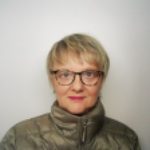Link to Pubmed [PMID] – 1333585
Nucleic Acids Res. 1992 Nov;20(21):5625-31
We have developed a new method for the physical mapping of genomes and the rapid sorting of genomic libraries which is based on chromosome fragmentation by the meganuclease I-Sce I, the first available member of a new class of endonucleases with very long recognition sequences. I-Sce I allows complete cleavage at a single artificially inserted site in an entire genome. Sites can be inserted by homologous recombination using specific cassettes containing selectable markers or, at random, using transposons. This method has been applied to the physical mapping of chromosome XI (620 kb) of Saccharomyces cerevisi and to the sorting of a cosmid library. Our strategy has potential applications to various genome mapping projects. A set of transgenic yeast strains carrying the I-Sce I sites at various locations along a chromosome defines physical intervals against which new genes, DNA fragments or clones can be mapped directly by simple hybridizations.
